Conifers are more than Christmas trees
There are 600+ species of conifers, and thousands of rare, incredibly unique cultivars and varieties.
Conifers can be green, blue, grey, silver, red, orange, purple, yellow, cream, or white. The branches can be upright, drooping, weeping, or completely unpredictable. Cones can be pink, red, blue, green, or brown, and be upright, drooping, compact, or even have tails.
The best part about adding conifers to your landscape is that most species are evergreen, so they add a layer of seasonal interest that outlives perennial flowers and deciduous shrubs.
Local greenhouses and nurseries will have standard conifer cultivars, but if you want a truly outstanding specimen plant, order from a certified rare plant nursery.
What is a Conifer?
A conifer is a plant that produces cones. Technically, a conifer is a gymnosperm, which is the scientific term for naked seed.
Although Christmas trees are the most common image of a conifer, cone-bearing plants come in many different colors, shapes, and sizes. Some conifers are deciduous, like the bald cypress, and others have leaves that resemble other broadleaf trees.

Landscape
Not all conifers are background elements in a garden. Many cultivars are striking specimens that add a unique character to a landscape or container garden.





Specialty Gardens
There are over 600 conifer species in the world, for most sunny, well-drained, loamy locations, but, what if your needs are more… unique?




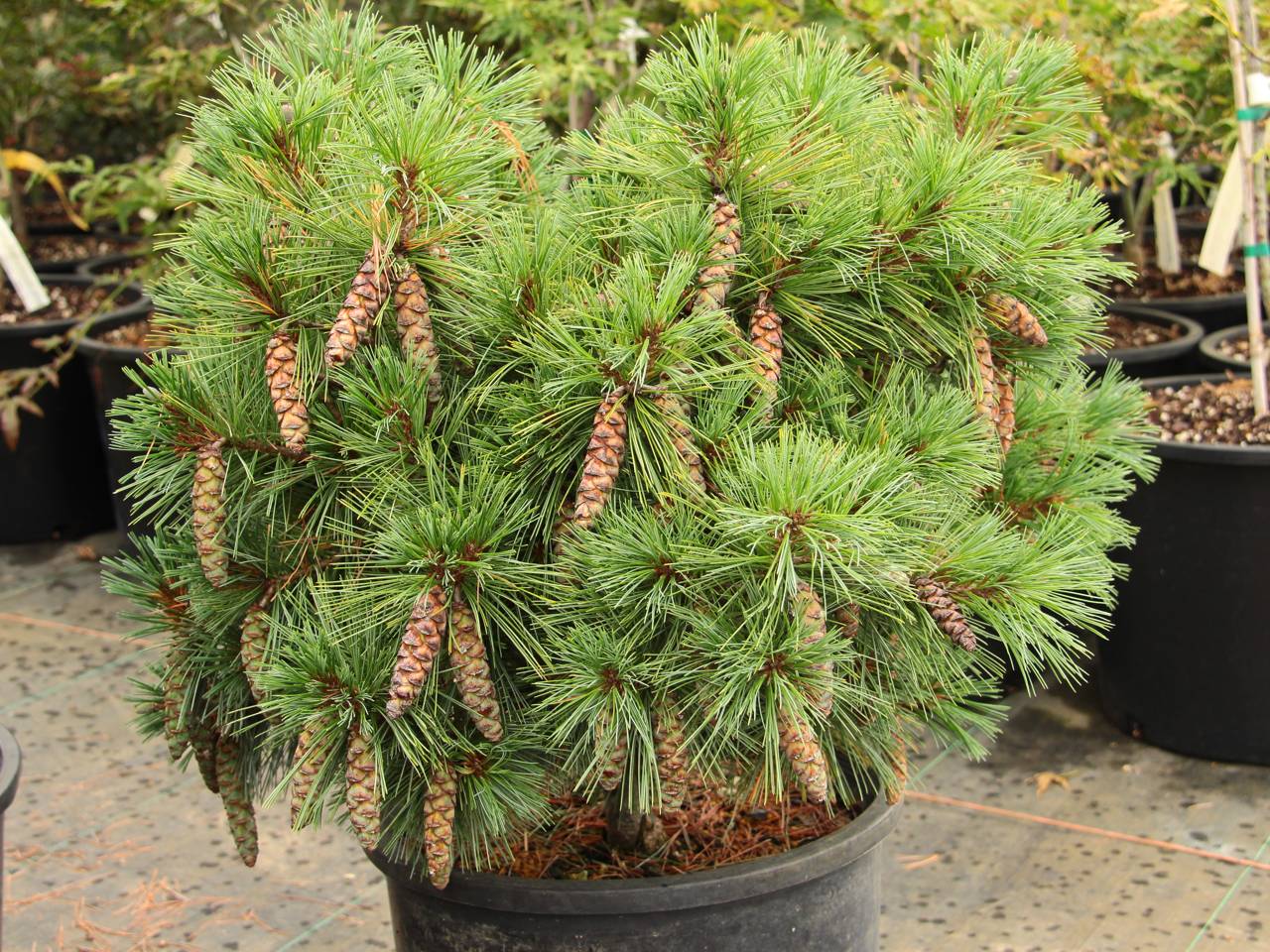
Well-maintained evergreens provide year-round structure to a landscape. Although conifers are considered a low-maintenance plant, they’re picky about the pruning process.





Fairy Gardens
Miniature conifers are well-suited to these specialty gardens because they grow very slowly, and they have a long lifespan.





by Feature
Rare dwarf conifer plants are full of character and have some surprising color variations that can add a unique pop of seasonal color to your landscape.




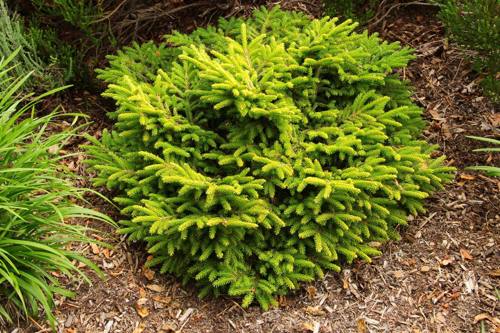
Deciduous conifers lose their needles in the fall, revealing unique bark textures and branching patterns, which draws special attention to new growth in the spring.




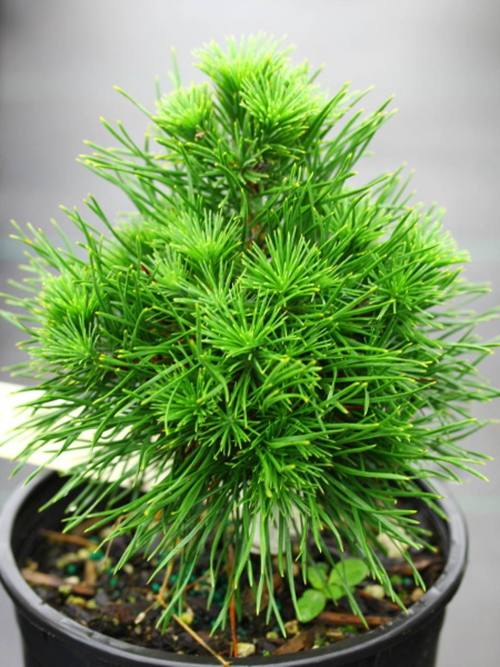
What kind of soil is best for conifers? They are the Goldilocks of the landscape. Of all the different types of soil, conifers prefer the middle ground. So, what does that look like?




Conifer Growth Rates & Classifications
Conifers are classified according to annual growth rates, not the overall size. For example, a dwarf conifer will grow 1”-6” each year, but dwarf conifers can become quite large over time. They will just become larger at a slower rate than intermediate conifers.
Miniature conifers grow 1” or less per year. These conifers are popular choices for specialty gardens, like fairy gardens or railroad displays (link to specialty gardens), and bonsai containers.
Dwarf conifers grow 1”-6” per year. These conifers are popular choices for containers and specimen plantings. Dwarf conifers are easier to prune into artistic shapes than conifers with a faster growth rate.
Intermediate conifers grow 6”-10” per year. These conifers are popular choices for large hedges, windbreaks, and as specimen trees in the lawn.
Large conifers grow 10” inches per year. These conifers are popular choices for windbreaks and large, open areas where trees can grow 100’+ over a few decades.
The mature size of a conifer is based on the average size of the variety or cultivar at 10 years. This information helps landscape designers plan for a manageable mature size, but most conifers will outgrow those dimensions without annual candling or pruning.
Conifer Shapes/Growth Habits
Conifers are also classified according to their overall shape or growth habit. Some conifers fit perfectly within the guidelines of a specific shape, while others might have characteristics of two or three different growth habits.
Pruning can also affect the shape of a conifer. Some plants may form a tighter, more formal shape with annual candling and basic maintenance. Other plants can be completely manipulated into artistic globes or clouds of foliage on bare trunks and branches.
Broad upright/oval conifers have a general, round shape that has a vague conical or pyramidal shape.
Narrow upright conifers are an extremely tight, upright shape.
Columnar conifers have a sharp, upright growth habit that is slightly wider at the base than at the top.
Conical/pyramidal conifers look like a Christmas tree.
Globose conifers are a round, globe shape that are bigger in the middle than on the top and bottom.
Mounding conifers are a more flat version of a globose conifer. Their overall shape resembles a mushroom cap.
Spreading/prostrate conifers have a flat, creeping growth habit, but the branches may be slightly upright at the tips.
Besides shape, conifers can have unique characteristics that add to the overall shape and appearance.
Weeping conifers have flexible branches and can range from a slightly weeping, layered look all the way to trees that are almost completely folded over.
Needle shapes also add to the overall appearance of a conifer. Recurved needles will accentuate the branch structure and may reveal variegation on the underside of the needle. Long, soft needles give the plant a shaggy, fluffy appearance. Twisted needles are less common, but they add a unique, structural element to a conifer that can be especially striking when the needles are variegated.
Cone Shapes/Colors
All conifers produce cones. Cones can vary in shape and size, but most cones have a specific structure unique to the species.
Some species and cultivars have brown, inconspicuous cones that add little to the overall appearance to the plant. However, some cultivars are specifically bred to accentuate the shape and color of the cone to be a showy, attractive feature that adds seasonal interest.
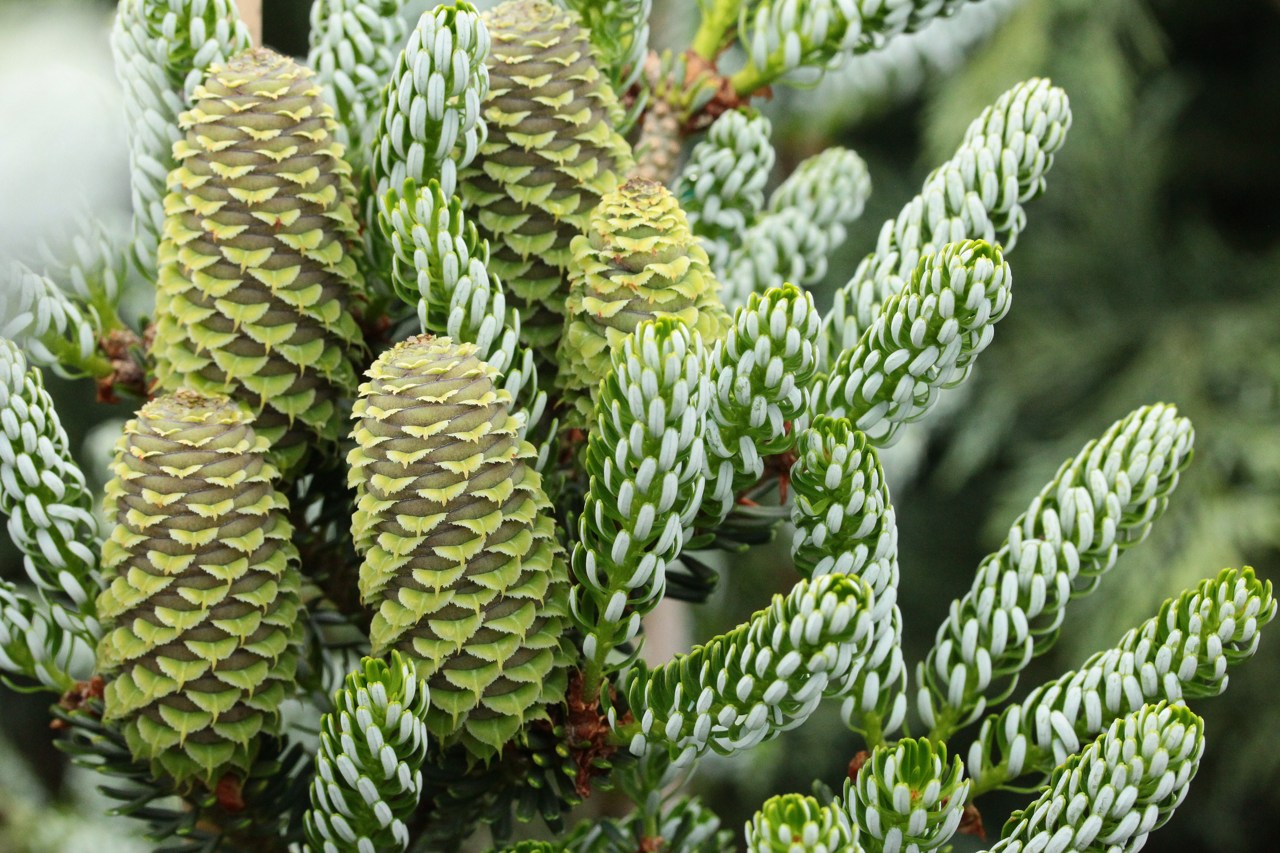
Abies koreana ‘Horstmann’s Silberlocke’
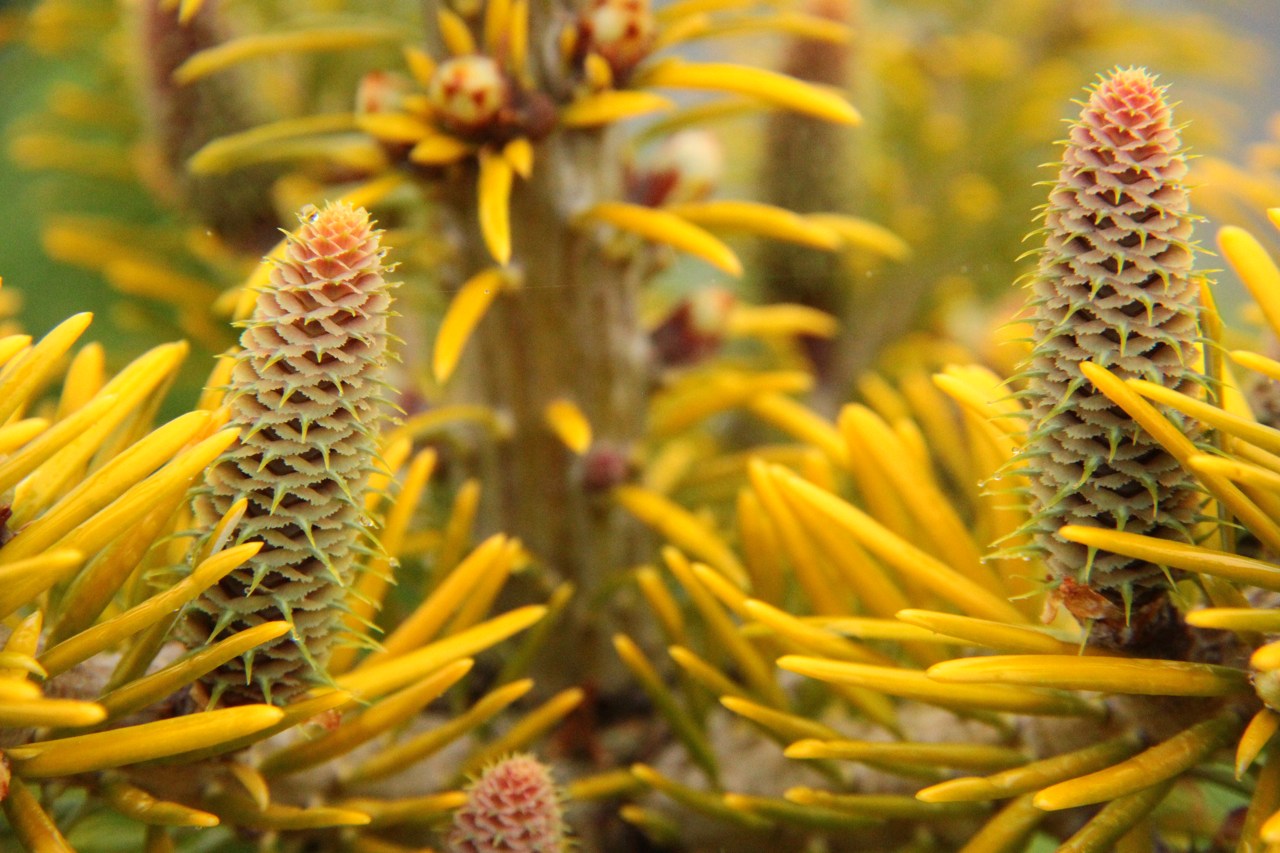
Abies koreana ‘Kobalt’
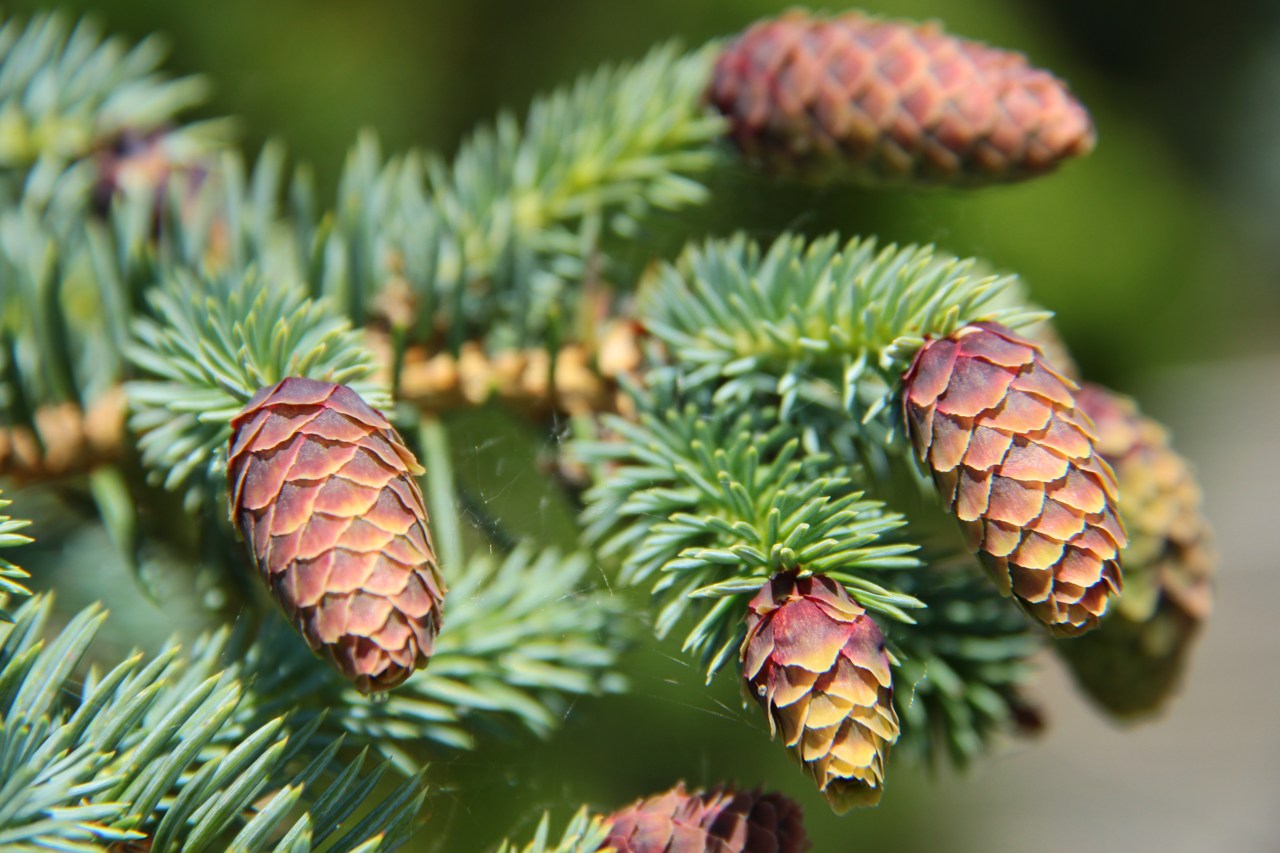
Picea pungens ‘Early Cones’
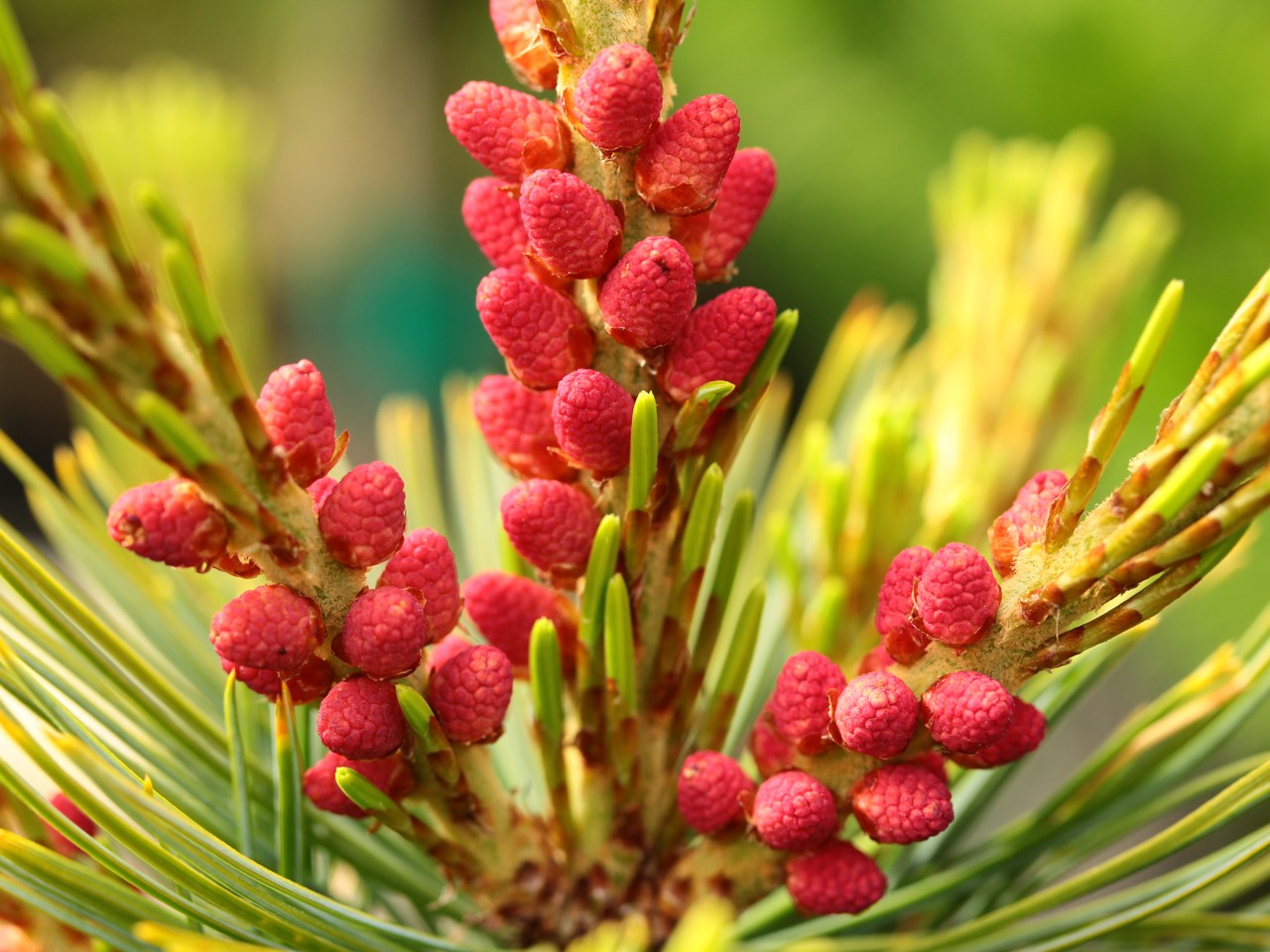
Pinus pumila ‘Blue Lamp’